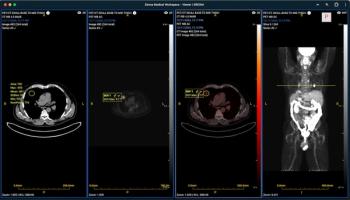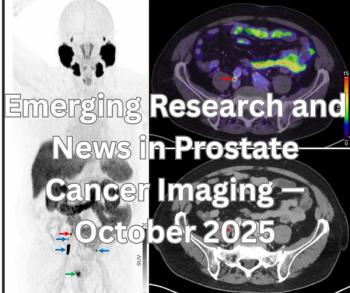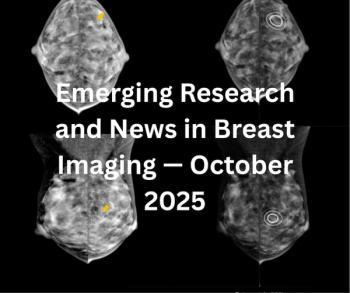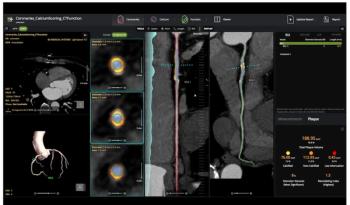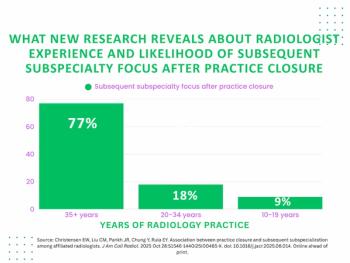
256-slice CT images body and heart
Coronal views (top) obtained with an experimental 256-slice CT scanner show hypervascular hepatocellular carcinoma and an artery feeding the cancer. The arterial phase is shown in maximum intensity projections 30 to 38 seconds after intracoronary injection of contrast media. The scanner, a collaborative effort between Toshiba and the National Institute of Radiological Sciences in Chiba, Japan, has been used to construct a volume-rendered image of normal heart enhanced by intravenous injection of contrast agent (middle). The left anterior descending artery (arrow) and diagonal branches (stars) are visualized on the left ventricle (bottom left). A volume-rendered image of a normal heart, obtained with the 256-slice CT, shows the circumflex artery (arrow, bottom right). Prototype conebeam CT captures the entire heart in a single gantry rotation. (Provided by National Institute of Radiological Sciences)
Coronal views (top) obtained with an experimental 256-slice CT scanner show hypervascular hepatocellular carcinoma and an artery feeding the cancer. The arterial phase is shown in maximum intensity projections 30 to 38 seconds after intracoronary injection of contrast media. The scanner, a collaborative effort between Toshiba and the National Institute of Radiological Sciences in Chiba, Japan, has been used to construct a volume-rendered image of normal heart enhanced by intravenous injection of contrast agent (middle). The left anterior descending artery (arrow) and diagonal branches (stars) are visualized on the left ventricle (bottom left). A volume-rendered image of a normal heart, obtained with the 256-slice CT, shows the circumflex artery (arrow, bottom right). Prototype conebeam CT captures the entire heart in a single gantry rotation. (Provided by National Institute of Radiological Sciences)
Newsletter
Stay at the forefront of radiology with the Diagnostic Imaging newsletter, delivering the latest news, clinical insights, and imaging advancements for today’s radiologists.

